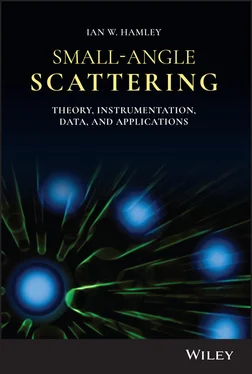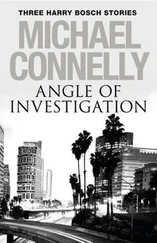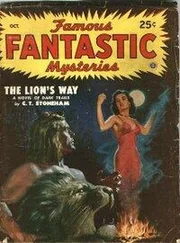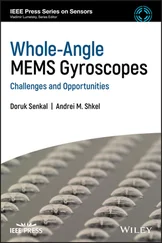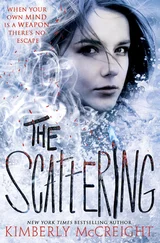Ian W. Hamley - Small-Angle Scattering
Здесь есть возможность читать онлайн «Ian W. Hamley - Small-Angle Scattering» — ознакомительный отрывок электронной книги совершенно бесплатно, а после прочтения отрывка купить полную версию. В некоторых случаях можно слушать аудио, скачать через торрент в формате fb2 и присутствует краткое содержание. Жанр: unrecognised, на английском языке. Описание произведения, (предисловие) а так же отзывы посетителей доступны на портале библиотеки ЛибКат.
- Название:Small-Angle Scattering
- Автор:
- Жанр:
- Год:неизвестен
- ISBN:нет данных
- Рейтинг книги:3 / 5. Голосов: 1
-
Избранное:Добавить в избранное
- Отзывы:
-
Ваша оценка:
- 60
- 1
- 2
- 3
- 4
- 5
Small-Angle Scattering: краткое содержание, описание и аннотация
Предлагаем к чтению аннотацию, описание, краткое содержание или предисловие (зависит от того, что написал сам автор книги «Small-Angle Scattering»). Если вы не нашли необходимую информацию о книге — напишите в комментариях, мы постараемся отыскать её.
A comprehensive and timely volume covering contemporary research, practical techniques, and theoretical approaches to SAXS and SANS Small-Angle Scattering: Theory, Instrumentation, Data, and Applications
Small-Angle Scattering: Theory, Instrumentation, Data, and Applications
Small-Angle Scattering — читать онлайн ознакомительный отрывок
Ниже представлен текст книги, разбитый по страницам. Система сохранения места последней прочитанной страницы, позволяет с удобством читать онлайн бесплатно книгу «Small-Angle Scattering», без необходимости каждый раз заново искать на чём Вы остановились. Поставьте закладку, и сможете в любой момент перейти на страницу, на которой закончили чтение.
Интервал:
Закладка:
Library of Congress Cataloging‐in‐Publication Data
Name: Hamley, Ian W., author.
Title: Small‐angle scattering : theory, instrumentation, data and
applications / Ian W. Hamley.
Description: First edition. | Hoboken, NJ : Wiley, 2021. | Includes
bibliographical references and index.
Identifiers: LCCN 2020043351 (print) | LCCN 2020043352 (ebook) | ISBN
9781119768302 (hardback) | ISBN 9781119768333 (adobe pdf) | ISBN
9781119768340 (epub)
Subjects: LCSH: Small‐angle scattering.
Classification: LCC QC482 .H365 2021 (print) | LCC QC482 (ebook) | DDC
537.5/3–dc23
LC record available at https://lccn.loc.gov/2020043351LC ebook record available at https://lccn.loc.gov/2020043352
Cover Design: Wiley
Cover Image: GiroScience/Alamy Stock Photo
Preface
This book aims to provide an up‐to‐date and comprehensive account of small‐angle scattering, both small‐angle x‐ray and small‐angle neutron scattering. It discusses both the underlying theory as well as giving practical information and useful examples. The book aims to complement the handful of existing texts in the field but has a broader coverage, not being restricted solely to biological macromolecules or polymers or soft matter. The text is intended to serve two uses. First, it is a ‘go‐to’ reference text as a source of detailed information and essential references for those already working in the field. Second, it should serve as a useful general introduction to the field for the non‐expert. The writing of this text relies on more than 30 years of experience working across the field on many systems and in numerous types of small‐angle scattering experiment, leading teams using many instruments across most major European facilities, as well as lab instruments.
I thank the Synchrotron Radiation Source, Daresbury, for hosting me as a visiting fellow in 2004 and Diamond Light Source for the joint appointment (with the University of Reading) 2005–2010. I would like to thank my PhD supervisors (back in the mists of time) at the University of Southampton, Prof. Geoffrey Luckhurst and Prof. John Seddon, for introducing me to the world of small‐angle scattering. I would like to thank many people with whom I have worked at synchrotron and neutron facilities over the years. The following is an incomplete list (sorry for omissions):
At Risø: Jan Skov Pedersen, Kell Mortensen, Martin Vigild, Wim de Jeu (AMOLF, The Netherlands) and Frank Bates (University of Minnesota, USA), and Jan at Aarhus as well and Frank at NIST also. At SRS Daresbury: Anthony Gleeson, Günter Grossmann, Ernie (Bernd) Komanschek, Liz Towns‐Andrews, Chris Martin, Wim Bras, Tony Ryan, Greg Diakun and Nick Terrill, and many members of my group when at the University of Leeds, especially John Pople and Patrick Fairclough and Tim Lodge (University of Minnesota) for SAS‐related collaboration. At ISIS: Steve King, Richard Heenan, Sarah Rogers, Ann Terry, and James Doutch. At LURE: Claudie Bourgaux. At LPS Université Paris‐sud: Marianne Imperor‐Clerc and Patrick Davidson. At ELETTRA: Heinz Amenitsch. At LLB: Laurence Noirez. At MLZ, Munich: Henrich Frielinghaus and at Oak Ridge National Lab: Bill Hamilton and George Wignall. At the ESRF: Olivier Diat, Pierre Panine, Narayan (Theyencheri Narayanan), Kristina Kvashnina, Daniel Hermida‐Merino, Giuseppe Portale, Petra Pernot, Martha Brennich, Mark Tully, Adam Round, Gemma Newby, and Tom Arnold. At DESY: Sergio Funari and Dmitri Svergun. At the ILL: Peter Lindner and Lionel Porcar. At MaxLab: Tomás Plivelic and at PSI‐Swiss Neutron Source: Joachim Kohlbrecher. At ALBA: Marc Malfois and at SOLEIL: Javier Perez. At Diamond: Nick Terrill, Katsuaki Inoue, Nathan Cowieson, Nikul Khunti, Charlotte Edwards-Gayle, and Rob Rambo. I would also like to especially thank Narayanan Theyencheri (Narayan) from the ESRF for a critical reading and valuable comments on the text. As usual, I take responsibility for any remaining errors and omissions. Biggest thanks go to Valeria Castelletto, who has been a team member/leader at many beamtime sessions – and (perhaps more importantly!) we have also shared our lives for the last 20 years, ‘and it doesn't seem a day too long’.
Ian W. Hamley
University of Reading, UK, 2020
1 Basic Theory
1.1 INTRODUCTION
Small‐angle scattering (SAS) is an important technique in the characterization of the structure and order in nanostructured materials as well as biomolecules and other solutions and suspensions. This book covers both small‐angle x‐ray scattering (SAXS, the subject of Chapter 4) and small‐angle neutron scattering (SANS, discussed in Chapter 5) as well as grazing incidence small‐angle scattering (GISAS, Chapter 6). This book does not discuss small‐angle light scattering (also known as static light scattering, SLS), which is a separate topic. Although there are many similarities in the theory, light scattering is the subject of many specialist texts [1, 2], as well as chapters in texts about general SAS [3, 4]. This book also includes in Chapters 3and 4discussion of wide‐angle scattering, especially wide‐angle x‐ray scattering (WAXS), which can be performed along with SAXS in the characterization of certain nanomaterials including polymers and nanoparticle systems with crystal or partially crystalline ordering. Instrumentation for the different types of measurement is discussed in Chapter 3and data analysis processes are discussed in Chapter 2.
SAS, by the nature of reciprocal space, is suited to probe structures with sizes in the approximate range 1–100 nm, which is the structural size scale corresponding to many types of soft and hard nanomaterial as well as biomolecules such as proteins in solution. Considering Bragg's law, the scattering from such large structures will be observed at small angles (less than a few degrees of scattering angle 2 θ ). Wide‐angle scattering covers the 0.1–1 nm range. Ultra‐small‐angle scattering (USAXS and USANS), also discussed in this book (see e.g. Chapters 3and 5), can extend up to 1000 nm or more, which overlaps with the size scale probed by light scattering.
SANS and SAXS have complementary characteristics ( Section 5.14), which are discussed in the respective chapters ( Chapters 3and 4) dedicated to these methods. These arise from the distinct natures of neutrons and x‐rays. Neutrons are nuclear particles, with a mass 1.675 × 10 −27kg. They have spin half (i.e. they are fermions) and a finite magnetic moment μ n= −9.662 × 10 −27J T −1, and zero charge. In contrast, x‐rays are photons with spin 1 (they are bosons), no mass, and no magnetic moment. X‐rays are a type of electromagnetic radiation with wavelengths in the approximate range 0.01–1 nm with overlap with gamma rays at short wavelengths and the extreme ultraviolet at long wavelengths. Despite the different nature of neutrons and x‐rays, both exhibit wave‐like diffraction by matter. Using de Broglie's relationship, the associated wavelength of neutrons (this is discussed quantitatively in Section 3.6, in terms of the velocity distribution of neutrons produced by reactor and spallation sources) can be calculated.
This chapter provides a summary of the theory that underpins SAS, starting from the basic equations for the wavenumber and scattering amplitude ( Section 1.2). Section 1.3introduces the essential theory concerning the scattered intensity and its relationship to real space correlation functions, for both isotropic and anisotropic systems. Section 1.4discusses the Guinier approximation, often used as a first analytical technique to obtain the radius of gyration from SAS data. The separation of a SAS intensity profile into intra‐molecular and inter‐molecular scattering components, respectively termed form and structure factor is discussed in Section 1.5. These terms are discussed in more detail, Section 1.6 first considering different commonly used structure factors, then Section 1.7focusses on examples of form factors and the effects of polydispersity on form factors. Form and structure factors for polymers are the subject of Section 1.8.
Читать дальшеИнтервал:
Закладка:
Похожие книги на «Small-Angle Scattering»
Представляем Вашему вниманию похожие книги на «Small-Angle Scattering» списком для выбора. Мы отобрали схожую по названию и смыслу литературу в надежде предоставить читателям больше вариантов отыскать новые, интересные, ещё непрочитанные произведения.
Обсуждение, отзывы о книге «Small-Angle Scattering» и просто собственные мнения читателей. Оставьте ваши комментарии, напишите, что Вы думаете о произведении, его смысле или главных героях. Укажите что конкретно понравилось, а что нет, и почему Вы так считаете.
